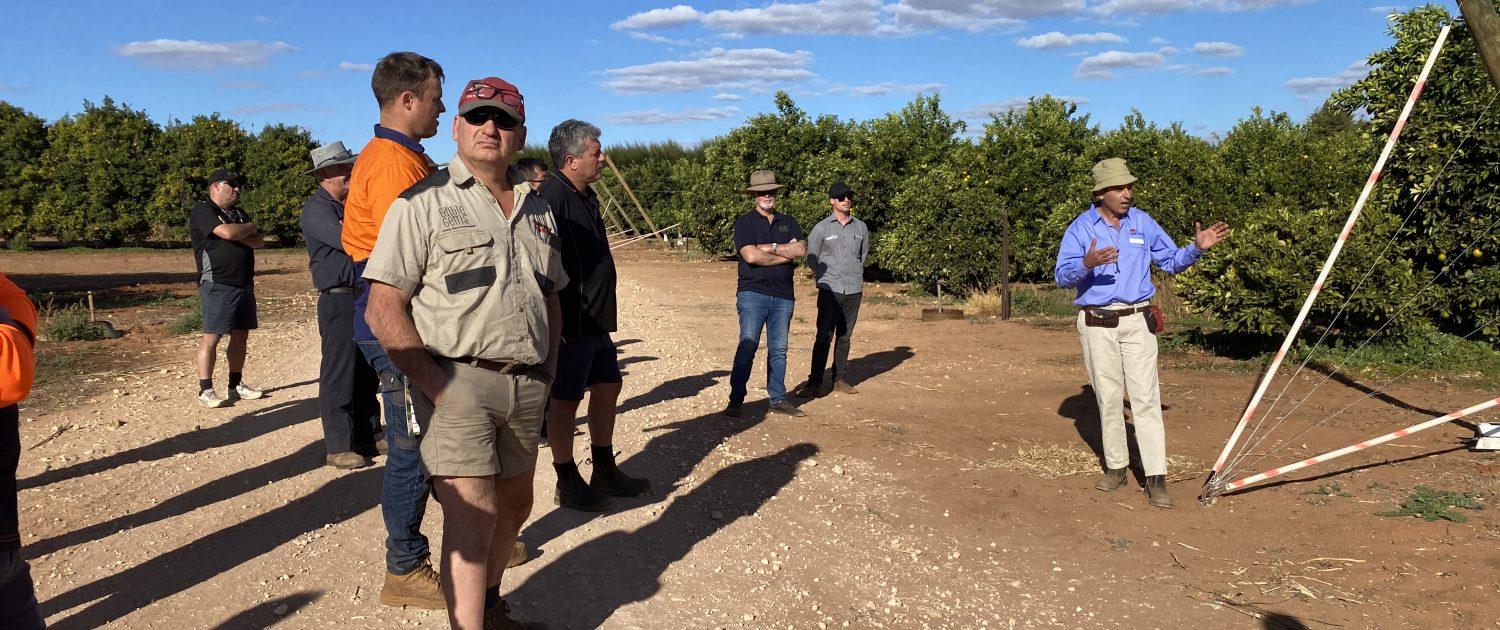26 August 2021
Trellis systems could pave way for robotic harvesting
Trellis systems could pave way for robotic harvesting
26 August 2021
NSW DPI is growing citrus on three different trellising systems in a bid to reduce vigour, increase flowering and fruit production, and potentially open the way to robotic harvesting.

The navel trellis trial, part of the national tree crop intensification in hortculture project, is being conducted at NSW DPI’s Dareton research centre.
Citrus development officer Steven Falivene provided an update at the R&D Roadshow.
This experiment is comparing different trellising systems to maximize the capture of sunshine.
“We’re comparing parmate, aspellia and cordone trellising systems where we’ll be quantifying the production, canopy development and cost of installation,” Steven said.
“We hope this work will reduce vigour, increase flowering and increase fruit production.”
Steven said citrus was being trialed on a trellis structure for three reasons:
• Yield
• Harvest efficiency and safety
• Robotic harvesting
As a comparison, Steven said an untrellised section of the NSW DPI site had navel trees planted on a 5 metre spacing.
It is constricted and overcrowded with a shaded canopy and narrow tractor access.
The trees were regularly hedged and yields are 15-30 tonnes/ha.

“Trellising is one strategy to improve light penetration into the canopy that will produce more fruitful wood and hopefully raise yields,” Steven said.
Trellising will also improve harvest efficiency and safety, as it will enable pickers to use a stable step up platform ladder.
Labour shortages, work health and safety issues and and advances in technology mean robotic harvesting is more viable – trialling the trellis systems will provide insights in to the
best systems for robotic harvest in the future.
“Robotic harvesting is already being trialled in citrus but the robots are unable to pick the citrus effectively within the canopy.
“The trellis structure will enable the robot to pick all the fruit efficiently and effectively.”
Researchers hope that benefits of the trellis structure will include improved light penetration for even colouring of fruit, reduced albedo breakdown, reduced fruit blemish and improved spray penetration.
The first treatment is the aspellia method, where the team will attempt to train the trees with a central singleleader limb growing upright from the main trunk, and bend and train laterals from the central leader horizontally along the wires.
The second treatment is cordon, where they will train multiple vertical limbs, grown about 30cm apart from the first horizontal lateral on the first wire.
The last treatment of the replicated trial is palmate, where the team will attempt to fan out all the branches all directions with some growing along the wire, some crossing the
wire diagonally.
This training style is expected to fill the trellis quicker than other treatments.
“We will be monitoring all labour and physical inputs and yield outputs of the trial, developing financial models to help determine if trellis production is a viable option for Australian citrus,” Steven said.
Membership
You are not logged in
If you are not already a member, please show your support and join Citrus Australia today. Collectively we can make big things happen.
